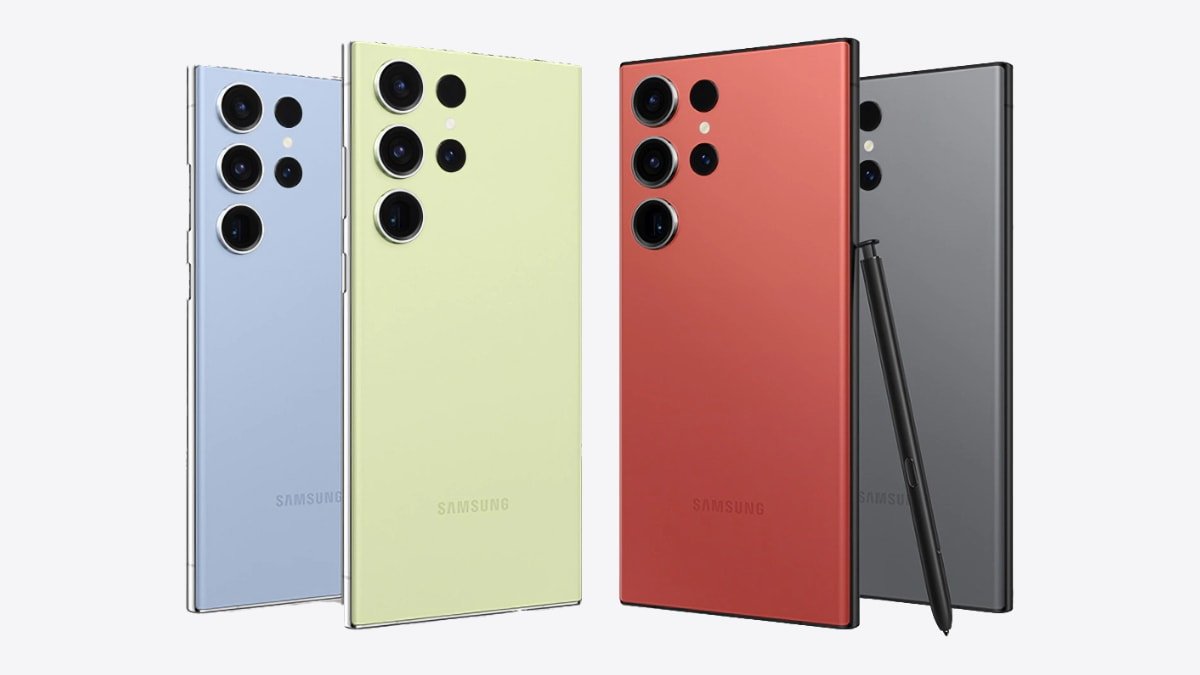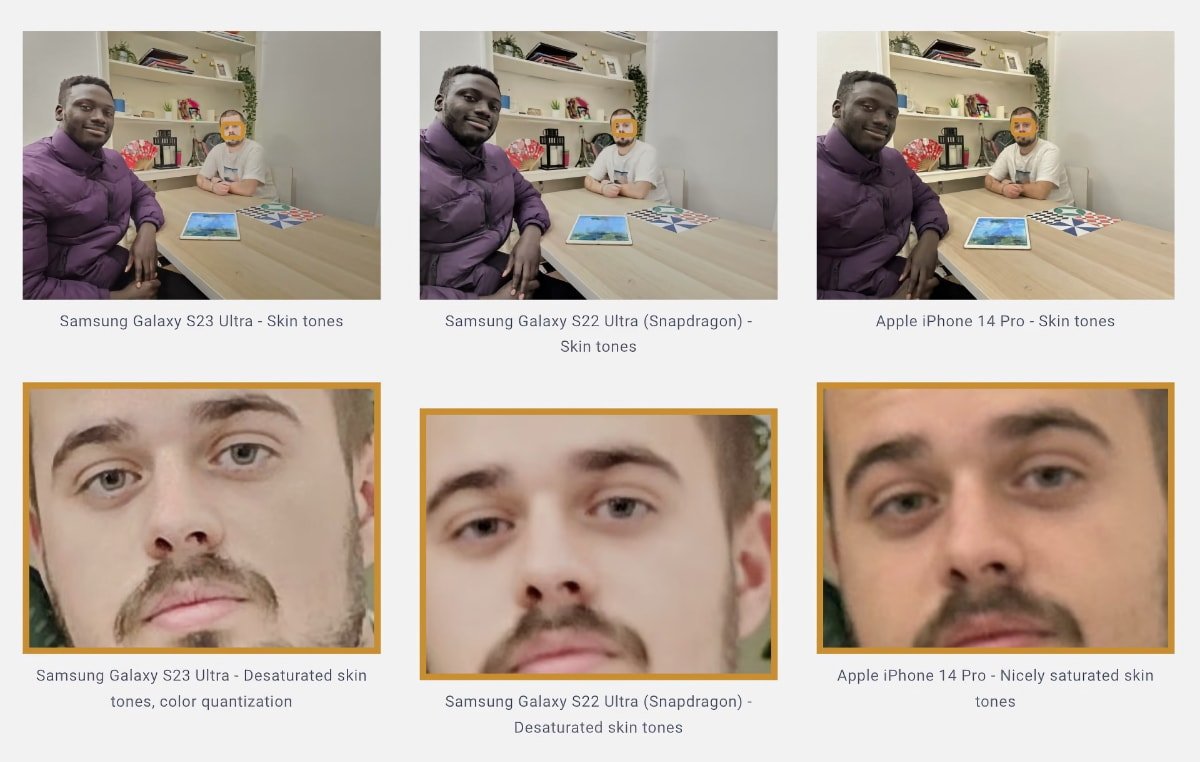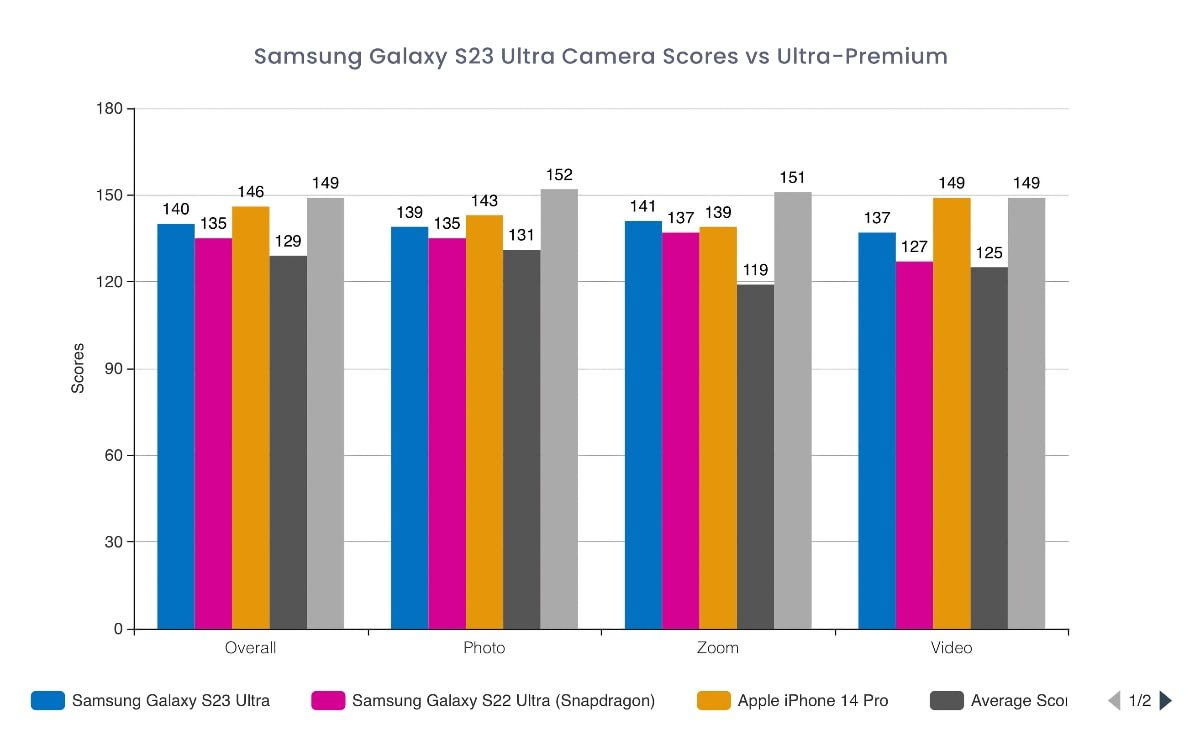Samsung Galaxy S23 Ultra didn't beat the iPhone 13 Pro in camera test
The Samsung Galaxy S23 Ultra camera is nice, but DXOMARK testing proves it to be close to but not quite equal to the iPhone 13 Pro.

Galaxy S23 Ultra from Samsung
Samsung released the flagship Galaxy S23 lineup in early February. They brought several upgrades, and improvements over the 2022 Galaxy line, including a new chip that Qualcomm says offers photography features powered by artificial intelligence.
However, DXOMARK places the Galaxy S23 Ultra in tenth place for worldwide results with a score of 140. Meanwhile, the iPhone 13 Pro has a score of 141 while the iPhone 14 Pro score is higher at 146 in fourth place.

Accuracy -- or lack thereof -- in skin tones
Some of the issues with the Galaxy S23 Ultra involved low contrast in backlit scenes, occasional local loss of detail on faces, and fusion artifacts in all conditions. It also had instability in exposures.
For instance, DXOMARK noted that the Galaxy S23 Ultra had "noticeable exposure differences between consecutive shots of the same scene." In contrast, the iPhone 14 Pro had more consistent exposure and better tone compression on faces.
The Galaxy S23 Ultra did score well in video thanks to its effective stabilization and fast, accurate autofocus. However, in low-light situations, the testers noticed a slight delay between the moment the shutter was triggered and the actual capture.

The device also gave faces an "unnatural appearance" in photos with bright backgrounds, with inaccurate skin tones. And it also created a slight halo effect around subjects under these conditions, making them appear to glow.
Overall, DXOMARK found the Galaxy S23 Ultra was a good all-rounder camera without significant drawbacks. However, Samsung still hasn't managed to best Apple in photography.
Read on AppleInsider

Galaxy S23 Ultra from Samsung
Samsung released the flagship Galaxy S23 lineup in early February. They brought several upgrades, and improvements over the 2022 Galaxy line, including a new chip that Qualcomm says offers photography features powered by artificial intelligence.
However, DXOMARK places the Galaxy S23 Ultra in tenth place for worldwide results with a score of 140. Meanwhile, the iPhone 13 Pro has a score of 141 while the iPhone 14 Pro score is higher at 146 in fourth place.

Accuracy -- or lack thereof -- in skin tones
Some of the issues with the Galaxy S23 Ultra involved low contrast in backlit scenes, occasional local loss of detail on faces, and fusion artifacts in all conditions. It also had instability in exposures.
For instance, DXOMARK noted that the Galaxy S23 Ultra had "noticeable exposure differences between consecutive shots of the same scene." In contrast, the iPhone 14 Pro had more consistent exposure and better tone compression on faces.
The Galaxy S23 Ultra did score well in video thanks to its effective stabilization and fast, accurate autofocus. However, in low-light situations, the testers noticed a slight delay between the moment the shutter was triggered and the actual capture.

The device also gave faces an "unnatural appearance" in photos with bright backgrounds, with inaccurate skin tones. And it also created a slight halo effect around subjects under these conditions, making them appear to glow.
Overall, DXOMARK found the Galaxy S23 Ultra was a good all-rounder camera without significant drawbacks. However, Samsung still hasn't managed to best Apple in photography.
Read on AppleInsider

Comments
I have to admit, eye balling pictures he'd taken on his Samsung vs a recent picture I had taken on my iPhone that he did look better on the Samsung Pictures.
You can start with the obvious of what cameras can, and cannot do. This was a massive failing on iPhones until they got multiple sensors/lenses.
What about autofocus speed and accuracy?
Then there was the low light/noise issue that left Apple behind rivals for a few years.
Then there was long exposure, hand held scenarios using AI assisted image stabilisation.
When you actually manage to take the photo you want, you can also objectively assess many areas of performance such as detail, exposure, distortion etc.
Yes, there is also a very subjective part to image evaluation, too.
Is the grass green enough for you? Do you like punchy HDR styling or do you prefer everything to be as close to natural as possible.
Do you want AI making your teeth whiter, eliminating reflections, compensating for optical limitations etc.
Not everybody likes DX0 as a reference site but they do use a suite of objective test evaluations as part of the review process.
The iPhone has recently started to climb the rankings in overall performance but it's largely been absent from the best of the bunch for years now and the iPhone 14 will probably be nudged down a slot or two once the P60 series is released (rumoured for next week).
Really it’s amazing just how far phone cameras have come over the last 20 years or so and I look forward to a seeing where they will end up.
The iPhone 14 Pro Max finally made me give up my Sony Camera and lenses. There are times where my Sony would undoubtedly get far superior photos vs my iPhone. But I just couldn’t be bothered dragging around a camera bag anymore and for 99 out of a 100 photos my iPhone would produce a comparable image.
Largely, at least with the flagship phones, I think you’re right. There isn’t much in the race and each phone can take better photos than the competition in certain scenarios.
That said, and as I mentioned, it is entirely possible to objectively quantify the quality of pictures (once you have the hardware to actually capture the image).
Well, I will - good job, Apple!
- Take a photo using the device being tested and bring up the photo on the screen.
- Hold the phone next to the subject that was just captured in a photo.
- Using a separate device, take a photo of that scene.
By doing this, we can clearly see how accurate the first photo was to the subject. Are colours the same, etc.Without that side-by-side comparison, we are only left with our personal preferences as we evaluate each photo.
In digital, everything has to be 'tuned' and whenever you tune something there is a tendency to redefine what is considered 'natural'.
For example, there are well known reviewers out there who claim that Apple’s camera processing has actually got worse with the latest phones because Apple moved to new sensors and the ISP software and processing output has yet to catch up with the new hardware.
Digital obviously leans toward to some profiles simply because it can.
No doubt there is also a factor of image perception within the viewer.